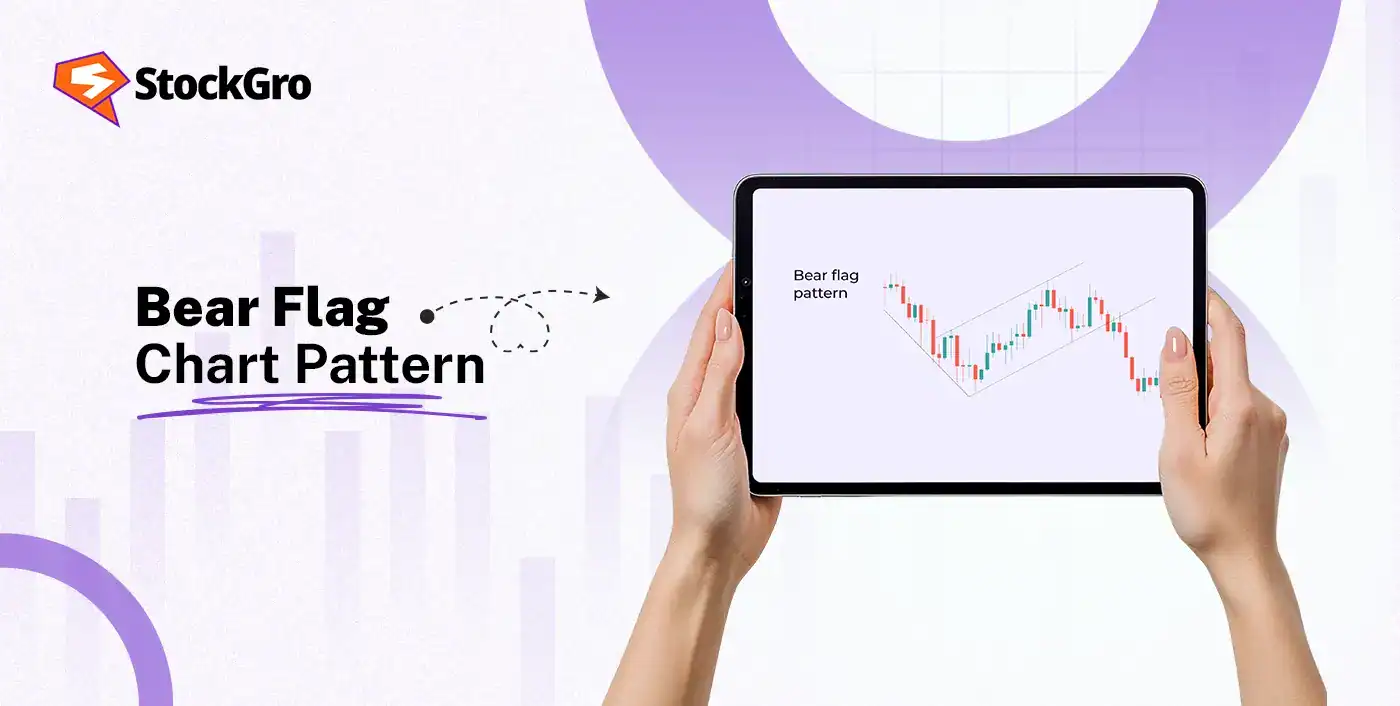
The 1-minute timeframe is fast, unforgiving, and constantly shifting. Yet beneath that high-speed movement lies a pattern of micro-trends and short bursts of momentum that many intraday traders rely on.
A 1-minute scalping strategy is built around recognising these small but frequent price pulses using tools like EMA, VWAP, RSI, MACD, Bollinger Bands, and Stochastic indicators across markets.
Instead of trying to predict long swings, this approach focuses on what’s happening right now: the immediate direction, volatility spikes, and quick pullbacks that create short-lived entries. By understanding how these indicators behave on a 1-minute chart, traders get a clearer picture of the structure, even in fast-moving markets.
This blog provides an understanding of how the 1-minute scalping strategy works, why certain indicators fit this timeframe, and how traders build rule-based setups designed for quick decisions.
What is the 1-Minute Scalping Strategy?
The 1-Minute Scalping Strategy is a high-tempo trading method which aims to profit from loads of small price movements on the 1-minute chart, with the trades lasting within seconds to minutes. The 1-minute time frame can provide frequent trading opportunities and limited risk, though it requires high discipline and is likely to be influenced by market noise.
Is the 1 Minute Time Frame Good for Scalping?
Yes, the 1-minute time frame is considered good for scalping as it provides a ton of opportunities to profit from small and frequent price movements, but it demands discipline, focus, and experience, due to market noise and high transaction costs, and it is not really recommended for beginners.
Here’s a quick pros and cons comparison!
| Pros | Cons |
| The small price moves in a day, creates multiple trade opportunities | The 1-minute chart has a lot of noise, so false signals are common |
| The trades last only seconds to minutes, keeping risks limited | It requires sharp focus and quick reactions, which can be tiring |
| The fast pace shows quickly whether the approach is working | The frequent trades increase costs, and spreads or commissions can reduce profits |
Best Indicators for the 1-Minute Scalping Strategy
For the 1-minute scalping strategy, the indicators should be highly responsive so that they can capture quick price movements. Here is how the indicators listed below can be effectively used:
Simple Moving Average (SMA) and Exponential Moving Average (EMA)
The Simple Moving Average (SMA) and Exponential Moving Average (EMA) help traders to figure out the short-term trends and spot the areas where the price might bounce. The traders usually use the 9 EMA and 21 EMA for quick trend reads, while the SMA serves as a reference point. When the 9 EMA moves over the 21 EMA, and both are rising above the SMA, the short-term trend is strong, and here the long trades make more sense.
A bullish setup usually appears when the 9 EMA moves over the 21 EMA or when the price pulls back and finds support at either of the EMAs. The logic flips in a downtrend, so if the 9 EMA moves under the 21 EMA or the price gets rejected at these moving averages, it signals a short-side opportunity.
Stochastic Oscillator
The Stochastic tells the traders when the market is stretched, either too high or too low, while also presenting how fast the price is moving. On the 1-minute chart, settings such as 5-3-3 or 9-3-1 provide better real-time signals. When the %K line crosses over the %D line in the oversold zone, it points to a probable bounce, and crossing down from the overbought area does the opposite.
It works better when it is used with the trend, for example, in an uptrend, a Stochastic cross upward from oversold often adds confirmation to signals coming from the EMAs.
Relative Strength Index (RSI)
The Relative Strength Index (RSI) measures momentum and helps in confirming overbought or oversold conditions. Since the 1-minute chart moves fast, shorter settings such as RSI 5 or 7 will provide quicker reads. The standard 30/70 zones work fine, too, but tightening them to 20/80 may help in filtering random spikes.
A strong buy setup appears when the price is trending above a higher moving average, such as the 50 EMA, and RSI dips below 30 and then climbs back above it. For sells, the traders usually look for the RSI to pop above 70 and fall back down while the price is trending lower. The divergences, when price makes a new high or low but RSI doesn’t, can warn that the move is running out of steam.
Bollinger Bands
The Bollinger Bands track volatility and help in spotting reversals or breakouts. The standard 20-period SMA with bands set at 2 standard deviations works well even on fast charts. When the price tags the lower band and indicators like RSI or Stochastic show over-sold conditions, it often hints at a short-term bounce toward the middle band.
During strong trends, a close outside the upper or lower band might signal continuation rather than reversal. A squeeze, when the bands tighten, usually means the market is gearing up for a bigger move, and the breakout direction becomes the focus.
MACD (Moving Average Convergence Divergence)
The MACD helps in tracking momentum shifts and trend strength. If the traders want faster signals on the 1-minute chart, they might shorten the default settings to something like 8-21-5, which can give quicker turns.
A buy signal shows up when the MACD line climbs above the signal line, and the histogram flips positive, especially when this happens in a strong trend. A cross down the signal line with a negative histogram supports short setups. The histogram also works well as a confirmation tool, and when it expands in the direction of the EMA or RSI signal, it adds confidence that the move has real strength behind it.
Four 1-Minute Scalping Strategies
Let’s discuss some quick 1-minute scalping strategies, utilising the above-discussed tools and indicators.
Strategy 1: VWAP + MACD
The Volume Weighted Average Price (VWAP) and the Moving Average Convergence & Divergence (MACD) setup pair up to show the trend direction and timing. The traders might look for buys when the price stays above the VWAP, and the MACD gives a bullish crossover, near the VWAP support. In the case of a sell setup, the price is expected to be below the VWAP with a bearish crossover. The trades usually end on an opposite MACD cross or at support and resistance.
Strategy 2: Keltner Channels + RSI
In this setup, the Keltner Channels show the trend strength, while the RSI helps in spotting dips or pullbacks. In an uptrend, when the price stays in the upper half of the channel and the RSI rebounds, say from near 30, it creates buy setups. The opposite applies for sell setups. The traders might exit at the opposite channel band or when the RSI moves back, for example, towards 50.
Strategy 3: ALMA + Stochastic
The Arnaud Legoux Moving Average (ALMA) is a smoother, more responsive moving average that filters out noise while keeping the trend clear. It pairs with the Stochastic, which tracks quick momentum shifts. The long setups form when the price holds above the ALMA, and the Stochastic turns up from oversold. The shorts show up when the price stays below the ALMA and the Stochastic rolls down from over-bought. The trades are usually closed when the Stochastic hits the opposite extreme or starts to reverse.
Strategy 4: RSI + Bollinger Bands
This approach works better in ranges. A long setup appears when the price tags the lower Bollinger Band and the RSI drops, for example below 30, which signals exhaustion, and the shorts trigger when the price hits the upper band with the RSI above 70. The traders usually exit a position at the middle band or when the RSI returns towards 50.
How to Trade the 1-Minute Scalping Strategy?
- Trend Identification: The traders wait for a clear crossover of the EMAs on the 1-minute chart. A bullish trend is indicated when the 9 EMA crosses above the 21 EMA, and vice versa.
- Confirming with the RSI: The traders go for a long position when the 9 EMA rises above the 21 EMA and the RSI lifts out of oversold, and they might go for a short position when the 9 EMA drops below the 21 EMA and the RSI falls from overbought.
- Execute Trade and Manage Risk: The traders jump in when the signs match their setup, keep a tight stop just beyond the recent swing, and take quick profits instead of waiting too long, while closing the trade if the price slows down.
Is the 1-Minute Scalping Trading Strategy Profitable?
Yes, the 1-minute scalping strategy can be profitable, but it is very difficult, requiring high discipline, fast execution, and strict risk management.
Let’s have a quick comparison of what makes it profitable and what makes it challenging!
| What makes it profitable? | What makes it challenging? |
| It generates many small gains from frequent trades | It involves a high degree of risk, and most traders lose money over time |
| The short-term price movements allows the traders to enter and exit fast | It demands constant attention and the ability to react instantly to market changes |
| It can be successful when entries and exits are sharp and rule-based | The profitability is impacted by trading costs and commissions |
Conclusion
The 1-minute scalping strategy suits those traders who can handle fast charts, quick decisions, and tight risk control. It can turn tiny moves into gains when the rules are followed with discipline. The setup works best in liquid markets where the price flows smoothly. While the method can reward skill and patience, it demands focus and strong control over the trading process and costs.
FAQ‘s
It can work, but it’s considered a little difficult for beginners, as the 1-minute chart moves fast, and mistakes might add up quickly. The frequent trades, tight stops, and heavy noise make it hard to keep control. The traders with more experience and discipline usually handle this style better.
The Volume WAP acts like an intraday balance line. When the price stays above it, the traders look for buys on pullbacks toward the VWAP. When the price stays below it, they focus on selling setups. The scalpers pair the VWAP with the MACD, and wait for crossovers near the VWAP to time entries.
The EMAs help with quick trend direction, the VWAP shows the day’s fair value, the RSI confirms momentum shifts, and the MACD tracks strength in the move. Together, they help the traders to judge direction, pullbacks, and timing without relying on long forecasts.
The low-volume markets can make scalping rough. The price moves without any direction, the indicators throw mixed signals, and the spreads feel larger. The breaks in volatility or sudden news spikes can also shake the trades out before the move settles.
The scalpers might use tight stop loss orders just beyond the recent swing’s high or low. Some might also use a small ATR-based stop to match volatility. The aim is to keep the stop small enough to protect the capital but wide enough to avoid random noise.
The spreads and execution in scalping are important, since the profits are small, wide spreads or slow order fills can wipe out the edge. The liquid markets with quick execution help in protecting each trade’s tiny gains.
Yes, the traders might do that, as even a quick look at the 5-minute or 15-minute chart could help. If the higher timeframe trend matches the 1-minute signal, the move has better odds of following through. It also filters out trades that come from pure noise.

